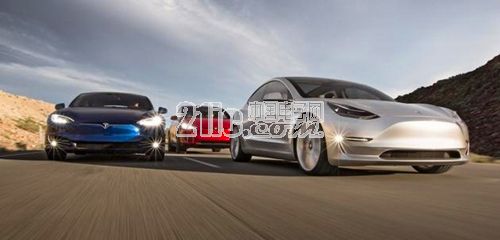"The next 12 months will be crucial for Tesla," said analyst Karl Brauer. With the launch of the Model 3 and a range of affordable electric vehicles, the company may finally bring its products into the mainstream. This shift could have a significant impact on the future of electric mobility.

The release of Model 3 brings not only revenue but also risks.
Electric vehicles are currently in a golden era of growth, with costs dropping rapidly. Experts predict that by 2025, the cost of electric cars will be lower than that of traditional gasoline-powered vehicles. In the next two years, most automakers are expected to introduce their own pure electric models.
In the second quarter of this year, Tesla faced a shortage of battery packs, leading to a drop in sales. Although the company still deals with profitability challenges, the rise of the electric vehicle market could provide much-needed support. Analysts believe that Tesla must continue improving production efficiency and product quality to maintain its leadership in the EV space.
Last year, Elon Musk told investors that with more self-produced parts, Tesla aimed to reach 500,000 units in production by 2018.
“Model 3 is Tesla’s first mass-produced model, which represents a fundamental shift from its earlier offerings,†Musk stated.
If Tesla successfully meets its production goals, it could double the number of electric vehicles on U.S. roads to 300,000 by the end of next year.
Gil Tal believes that Tesla’s high-end models have already reshaped the market. “I think Model 3 has comparable power, and its appeal might surpass all existing models on the market,†he said.
Several studies show that consumers now focus more on practical aspects, such as the cost comparison between electric and traditional vehicles.

The release of Model 3 brings not only revenue but also risks.
For example, the Chevrolet Bolt, a fully electric vehicle, is priced at $37,500. Even with federal and state subsidies, it remains $5,000 more expensive than its gas-powered counterpart. Additionally, General Motors is estimated to lose $9,000 per Bolt sold.
San Francisco legislator Phil Ting suggested that governments should offer more incentives to make electric vehicles "equal" to traditional vehicles in cost. California senators are considering this proposal.
Steve Chadima, vice chairman of AEE, emphasized that the pace of electric vehicle adoption is still too slow.
Analysts warned that Model 3 must avoid repeating the issues of earlier Tesla models, ensuring both quality and software reliability. If it fails to meet consumer expectations, Tesla’s plans for electric trucks, minivans, and semi-trailers could be at risk.
Brauer believes Tesla must prove it can build a reliable car and maintain a strong after-sales service network. As Model 3 enters the market, the existing Supercharger network may struggle to keep up.
Over the past few years, Tesla has expanded its Supercharger stations rapidly. The company plans to add 100 service centers, 350 mobile service vehicles, and 1,500 service personnel in the coming years.
Brauer noted that Tesla’s electric vehicles have a five-year first-mover advantage due to their longer range. “Tesla was once the market leader, but the competition is about to arrive,†he said.
Although the growth rate has slowed slightly in recent years, the electric vehicle market is still expanding quickly. The International Energy Agency estimates that global electric vehicle ownership doubled from 1 million to 2 million in just one year (2015 to 2016).
Tesla also has a major advantage: its brand. The company hardly needs to spend on advertising, thanks to Elon Musk, the “Iron Man†of Silicon Valley. His ability to attract customers was evident when 400,000 users paid $1,000 to reserve Model 3, even before knowing when they would receive the car or how it would perform.
Chadima said, “Tesla has a unique magic—it knows how to touch the user’s soul.â€
Despite its $35,000 price tag, Model 3 can comfortably seat five adults and offers a range of 215 miles (about 346 km). It also comes with advanced technology and has the potential for future autonomous driving capabilities.
More than 90% of the 400,000 Model 3 reservations came from new customers. Matthew Pirkowski, a 31-year-old consultant, had followed Tesla for years but hesitated to replace his BMW with the $100,000 Model S. After the release of Model 3, he placed an order without hesitation. “My BMW is good, but Tesla is what I really want,†he said.
Musk’s promises: some achieved, others delayed.
As a busy entrepreneur who often sets ambitious deadlines, Musk has a habit of pushing forward with bold timelines.
Last May, he claimed that Model 3 would enter mass production in July 2017, with the first 30 cars delivered on July 28. In March last year, he promised to double the number of Superchargers by the end of 2017. At the time, there were 3,600 Superchargers; now, the number has grown to 6,050, with plans to reach 7,000 by the end of this year.
Also in May last year, Musk said the Fremont factory could produce 100,000–200,000 Model 3s in the second half of 2017. While current production capacity is around 100,000 units, the goal is to increase monthly output to 20,000 by the end of the year.
This concludes our coverage of the Model 3 release, highlighting both the opportunities and challenges it brings to the automotive electronics industry. For more detailed and updated information, stay tuned to Electronic Engineering.
Digital Multimeter ,Bench Type Digital Multimeter,Meco Multimeter,Hioki Multimeter
YINTE TOOLS (NINGBO) CO., LTD , https://www.yinte-tools.com
